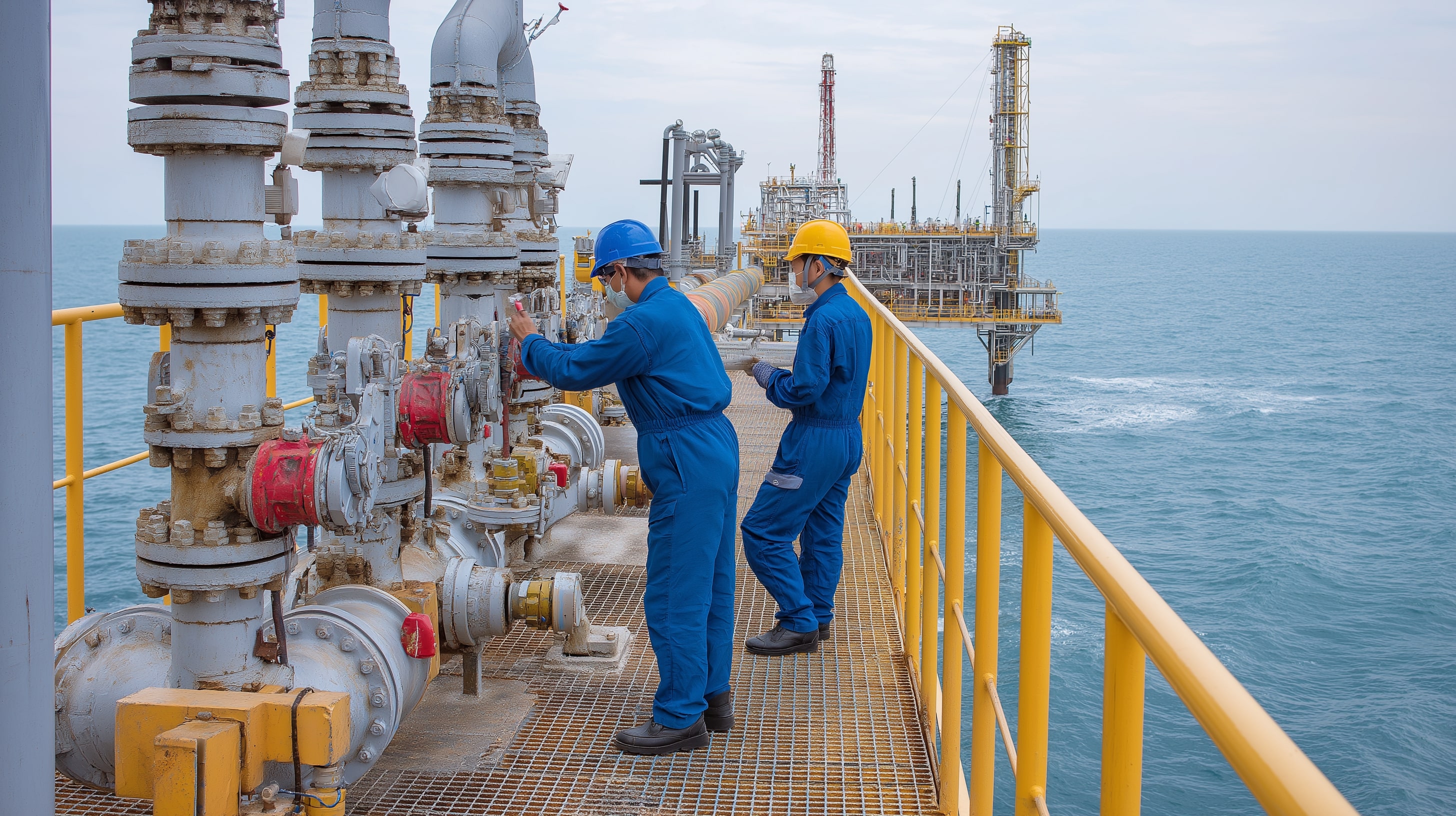
Natural Gas Price (NG=F) Steadies at $3.35 as Storage Surges and LNG Demand Anchors Market
With inventories at 3,878 Bcf and production near 107 bcfd, natural gas balances mild weather weakness against record LNG exports of 16.6 bcfd — setting up a volatile path toward $3.70 if winter demand strengthens | That's TradingNEWS
Natural Gas (NG=F) Price Forecast: Futures Hold Near $3.35 as Storage Builds, Weather Softens, and LNG Demand Balances the Market
Volatility Grips Natural Gas as Traders Eye Contract Expiration and Storage Data
Natural Gas (NG=F) prices slipped to $3.35 per MMBtu, down roughly 2.4%, as traders engaged in profit-taking ahead of the November contract expiration. The decline reflects a complex intersection of weather moderation, robust production, and elevated storage levels, all overshadowing strong LNG export momentum. Market volatility intensified with the options expiry, while traders positioned themselves ahead of Thursday’s EIA storage report, expected to show a +70 Bcf injection, keeping total storage near 3,878 Bcf, roughly 4.5% above the five-year average. This abundance has capped price rallies despite regional tightening in Canada and Europe. Analysts at B. Riley Wealth and EBW Analytics highlight that near-term bearish drivers—chiefly warm weather forecasts and normalized output—are offsetting bullish LNG demand and structural tightness anticipated for winter.
Weather Moderation Erodes Early Heating Demand
Forecast adjustments from LSEG cut heating degree days (HDDs) over the next two weeks to 207 from 214, implying softer early-season heating demand across the U.S. The updated Global Forecast System (GFS) suggests only a modest cooldown through mid-November, with average temperatures projected near long-term norms. While colder weather typically lifts natural gas prices, this year’s mild start to the heating season has muted buying pressure. Meteorological normalization also curbed speculative longs that had built during the September rebound from $2.89, contributing to current downside momentum. Still, traders are cautious about underpricing weather risk, as volatility could surge again if late November turns sharply colder, especially with total demand projected to rise from 108.6 to 109.3 bcfd next week.
Supply Growth Remains Elevated Despite Minor Output Declines
Production remains high, averaging around 107.0 bcfd in October, only slightly below September’s 107.5 bcfd and August’s record 108.0 bcfd. On a daily basis, output slipped to 106.7 bcfd, but the decline is not enough to significantly alter the oversupply picture. Record U.S. production earlier this year enabled substantial inventory injections, pushing total stocks above 3.8 Tcf heading into the winter season. Canadian imports remain steady at 7.5 bcfd, while rebounding production north of the border keeps regional prices suppressed, particularly at AECO where recent quotes hovered near $1.81 per MMBtu. Analysts note that without a sharp drop in output or a weather-driven demand spike, inventories could remain “comfortable,” limiting upside above $3.60–$3.70.
LNG Exports Provide Underlying Support Amid Strong Global Demand
Even as domestic fundamentals soften, U.S. LNG exports continue to underpin prices. Flows to the eight major U.S. LNG export terminals reached 16.6 bcfd in October, up from 15.7 bcfd in September and setting a new monthly record. The resilience of LNG demand from Asia and Europe—where the TTF benchmark trades near $10.95/mmBtu and the JKM near $11.12/mmBtu—is cushioning downside risk for U.S. gas. The International Energy Agency (IEA) projects U.S. LNG could account for one-third of global supply by 2030, anchoring structural demand even as near-term prices fluctuate. However, hurricanes along the Gulf Coast, such as Hurricane Melissa, remain a two-edged sword: capable of disrupting both export infrastructure and domestic consumption. The storm’s trajectory through Jamaica caused market jitters, but its overall effect on U.S. gas flow is expected to be temporary.
European and Asian Benchmarks Stabilize as Global Storage Normalizes
European gas futures at the Dutch TTF hub traded around €31.55/MWh ($10.74/mmBtu), while UK front-month prices settled near 79.22p/therm. These levels reflect a market finding equilibrium at a technical support zone amid mild weather and strong LNG arrivals. EU storage stands 82.8% full, significantly lower than last year’s 95.2%, but still providing a comfortable cushion for early winter. Analysts at Engie and Global Risk Management observe firm support near €31/MWh, warning that any colder shift could quickly lift prices toward €35/MWh. Meanwhile, steady pipeline flows from Norway and Algeria continue to stabilize European balances. In Asia, the JKM benchmark remains stable, supported by recovering industrial demand and new LNG tenders from South Korea and India
Read More
-
PFFA ETF Nears $21.50 as Rate Cuts and 9.49% Yield Spark Renewed Demand
29.11.2025 · TradingNEWS ArchiveStocks
-
XRPI and XRPR ETFs Ignite Ripple’s Institutional Rally as Inflows Near $1B and XRP Holds $2.20
29.11.2025 · TradingNEWS ArchiveCrypto
-
Natural Gas Price Forecast - NG=F Blasts to $4.85 as Demand Surge Fuel Multi-Month Breakout
29.11.2025 · TradingNEWS ArchiveCommodities
-
USD/JPY Price Forecast - Yen to Dollar Slides to 156.10 as Yen Strengthens on Fed Cut Expectations
29.11.2025 · TradingNEWS ArchiveForex
Technical Barriers and Contract Dynamics Define Near-Term Moves
Technically, NG=F maintains support near $3.28—the 200-period EMA and a key Fibonacci level—while facing resistance around $3.57, the recent swing high. RSI readings near 55 indicate moderate bullish potential within a short-term ascending channel. Analysts anticipate increased volatility as the contract transitions from November to December, with front-month futures expected to “dip and recover” over the next 30–45 days, according to EBW Analytics. A sustained break above $3.57 could open the door to $3.70–$3.75, while a failure to defend the $3.31 zone could trigger declines toward $3.15. This setup suggests range-bound trading through early November, with traders balancing robust LNG flows against muted domestic consumption.
Macro Drivers: Fed Rate Cuts, Energy Complex Correlation, and Risk Appetite
The broader energy complex remains under pressure, with WTI crude at $60.21 (-1.79%) and Brent at $64.50 (-1.71%), reflecting cautious sentiment ahead of global central bank meetings. The Federal Reserve’s expected 25-basis-point rate cut adds a macro tailwind for commodities by weakening the dollar, but subdued industrial output limits spillover demand for gas. Furthermore, cross-commodity softness—especially in metals and oil—has introduced short-term risk-off positioning across energy assets. Analysts expect this correlation to persist until new demand catalysts emerge from colder temperatures or a rebound in industrial power consumption.
Market Outlook and Verdict
Given current balances, Natural Gas (NG=F) remains fundamentally stable but vulnerable to short-term bearish pressure. Ample storage, steady production, and mild weather counteract strong LNG exports and a softer dollar. The market’s next decisive move hinges on November’s weather patterns and the pace of inventory drawdowns. Technicals indicate that as long as prices hold above $3.28, momentum could rebuild toward $3.60–$3.70; however, a sustained break below $3.25 would signal renewed weakness into $3.10–$3.15. With volatility expected to intensify post-expiration and fundamentals broadly balanced, the outlook for NG=F is Neutral to Mildly Bullish — a Hold for traders positioning into winter.



















